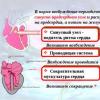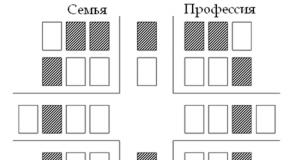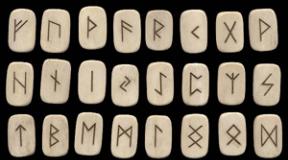Jintropin analogues and prices. Application during pregnancy and lactation
International name
Somatropin (Somatropin)Group affiliation
Growth hormoneDosage form
Solution for subcutaneous administration, lyophilisate for the preparation of a solution for subcutaneous administrationpharmachologic effect
Genetically engineered somatotropic hormone, acting on the epiphysis plates of tubular bones, stimulates the growth of skeletal bones. It activates the synthesis of chondroitin sulfate and collagen, increases the excretion of hydroxyproline, and helps to increase body weight.
Regulates protein metabolism: stimulates the transport of amino acids into the cell and protein synthesis. Increases the number and size of muscle cells, hepatocytes, thymus cells, thyroid gland, adrenal glands and gonads.
Mobilizes fats: lowers cholesterol concentration and increases TG, reduces adipose tissue.
Retains Na +, K +, phosphorus and water in the body (prevents excretion); has anabolic (stimulates the transport of amino acids into the cell and protein synthesis), hyperglycemic action (inhibits the release of insulin). The increased excretion of Ca2 + by the kidneys is compensated by its increased absorption in the gastrointestinal tract.
The duration of the therapeutic action is 12-48 hours.
Indications
Substitution therapy in childhood in patients with endogenous growth hormone deficiency (pituitary dwarfism), incl. against the background of chronic renal failure, Prader-Willi syndrome; Shereshevsky-Turner syndrome; replacement therapy of severe STH deficiency in adults.
There are reports in the literature on the use of somatropin in the symptomatic treatment of the following diseases (indications not approved): kwashiorkor, osteoporosis, cachexia, or significant weight loss in AIDS patients.
Contraindications
Hypersensitivity, brain tumors, malignant tumors any localization (acceleration of their growth is possible, treatment is possible after effective anticancer therapy), urgent conditions (including conditions after heart surgery, abdominal cavity, acute respiratory failure).Side effects
Headache, excessive fatigue or weakness, epiphyseolysis of the femoral head (limping, pain in the hip and knee), peripheral edema in the first weeks of treatment, arthralgia, myalgia, increased intracranial pressure (severe and frequent headaches, nausea, vomiting, visual impairment, disc edema optic nerve(usually observed during the first 8 weeks of treatment, most often in patients with Shereshevsky-Turner syndrome), pancreatitis (abdominal pain, nausea, vomiting), otitis media and hearing impairment (in patients with Shereshevsky-Turner syndrome), gynecomastia, tunnel syndrome, fluid retention, peripheral edema, leukemoid reactions, accelerated growth of a preexisting nevus (possible malignancy). Scoliosis progression (in patients with excessive rapid growth).
Allergic reactions: skin rash, itching.
Local reactions in the area of administration: soreness, numbness, hyperemia, swelling, lipoatrophy, itching.
In a small percentage of patients - the formation of antibodies to STH with a decrease in its effectiveness.
Increased blood concentration of inorganic phosphate, parathyroid hormone and alkaline phosphatase activity.
Application and dosage
V / m, with low growth due to inadequate endogenous secretion of growth hormone - 12 IU / m2 / week or 0.6 IU / kg / week; if ineffective, the dose is increased to 20 IU / m2 / week or to 0.8 IU / kg / week. The weekly dose should be divided into 3-6 injections (4 IU / m2 or 0.2 IU / kg). Injections should be given in the evenings.
With insufficient growth in patients with gonadal dysgenesis (Turner syndrome) - 18 IU / m2 / week or 0.6-0.7 IU / kg / week. In the second year of treatment, doses can be increased to 24 IU / m2 / week or 0.8-1 IU / kg / week. The weekly dose of the drug should be divided into 7 single subcutaneous injections of 2.6 IU / m2 or 0.09-0.1 IU / kg.
In some cases, when treating patients with Turner syndrome, it may be necessary to increase doses already in the first year of treatment. Treatment is stopped when the patient reaches a height sufficient for an adult, or when the epiphyses of the tubular bones are closed.
The supplied NaCl solution is used to prepare the solution; for injection, a strictly required amount of the drug is collected, the remaining solution is discarded. After adding the solvent, gently, without shaking, rotate the vial until the contents are completely dissolved. The resulting solution should be clear. If the solution is cloudy or contains particles of undissolved drug, it must not be used for injection.
Norditropin Penet: in case of growth hormone deficiency - s / c, 0.07-0.1 IU / kg or 2-3 IU / m2 6-7 times a week. With Shereshevsky-Turner syndrome - s / c, 0.14 IU / kg or 4.3 IU / m2 6-7 times a week. With chronic renal failure in children, accompanied by growth retardation - s / c, 0.14 IU / kg or 4.3 IU / m2 7 times a week. The dry matter is dissolved with the supplied solvent.
Genotropin: the recommended dose is s / c, 0.5-0.7 IU / kg or 12-16 IU / m2 per week. With Shereshevsky-Turner syndrome - 1 IU / kg or 30 IU / m2 / week. With chronic renal failure in children, accompanied by growth retardation, - 1 IU / kg or 30 IU / m2 / week. After 6 months of therapy, it is necessary to adjust the dose. Adults with severe growth hormone deficiency - 0.125-0.25 IU / kg per week. The selection of the dose is carried out depending on the effectiveness, adverse reactions, concentration of insulin-like growth factor in blood serum. Older patients are given lower doses.
Biosome: with a deficiency of growth hormone in children - 0.6-0.7 IU / kg or 18 IU / m2 of body surface per week. For patients receiving the drug for a long time, as well as for children during puberty - 1 IU / kg per week. With Shereshevsky-Turner syndrome - up to 1 IU / kg or 30 IU / m2 per week. The recommended dose is divided into 6-7 injections and administered subcutaneously in the evening. The best results are observed when prescribing treatment for more early age... Treatment continues until puberty or until bone growth zones are closed. It is possible to discontinue treatment when the desired growth is achieved. The drug is dissolved in the attached solvent containing 0.9% benzyl alcohol: 4 IU in 1.1 ml, 8 IU in 2.1 ml. The volume of the solvent collected in the syringe is injected into the vial, directing a stream of liquid onto the wall of the vessel and without affecting the drug. The bottle is shaken with gentle circular motions (do not shake!) Until the drug is completely dissolved. Do not use a solution that is cloudy or contains undissolved particles.
Humatrop: with growth hormone deficiency - 0.18 mg / kg or 0.54 IU / kg per week. The dose is divided into equal parts and administered within 3 or 6 days a week in / m or s / c. The maximum dose for replacement therapy is 0.1 mg / kg or 0.3 IU / kg 3 times a week. With Shereshevsky-Turner syndrome - s / c, 0.3-0.34 mg / kg or 0.9-1 IU / kg (24-28 IU / m2) per week. The weekly dose is divided into 6-7 injections, preferably at night.
Zomactone: the dose is set individually. The recommended dose is 0.5-0.7 IU / kg or 14.8-20.7 IU / m2 per week. The weekly dose is divided into 6-7 s / c injections. The maximum dose is 0.81 IU / kg or 24 IU / m2 per week. The treatment continues for several years.
Treatment of cachexia against the background of AIDS: patients weighing more than 55 kg - sc, 18 IU (6 mg) before bedtime, 45-55 kg - 15 IU (5 mg), 35-44 kg - 12 IU (4 mg) , less than 35 kg - 0.1 mg / kg / day.
Rastan: n / a slowly, once a day (usually at night). With insufficient secretion of growth hormone in children - 25-35 μg / kg / day (0.07-0.1 IU / kg / day), which corresponds to 0.7-1 mg / m2 / day (2-3 IU / m2 / day ). With Shereshevsky-Turner syndrome, with chronic renal failure in children, accompanied by growth retardation - 50 μg / kg / day (0.14 IU / kg), which corresponds to 1.4 mg / m2 / day (4.3 IU / m2 / day). In case of insufficient growth dynamics, dose adjustment is carried out. With growth hormone deficiency in adults, the initial dose is 0.15-0.3 mg / day (0.45-0.9 IU / day) with a subsequent increase depending on the effectiveness. When selecting a dose, insulin-like growth factor 1 (IGF-1) in serum can be used as a control indicator. The maintenance dose is selected individually, but should not exceed 1 mg / day (3 IU / day). In the elderly, lower doses are recommended.
special instructions
The formation of antibodies to the drug and E. coli proteins is possible. The study of the titer of antibodies to somatropin should be carried out in cases where the patient does not respond to therapy.
Patients with growth hormone deficiency due to intracranial damage should be regularly examined for progression or recurrence of the underlying disease.
In order to avoid atrophy of the subcutaneous fatty tissue at the injection site, it is necessary to change the injection site each time.
The possible occurrence of hypothyroidism during treatment should be corrected by TSH administration to achieve the effect of increasing growth (control of thyroid function).
The drug is ineffective if low growth is due to the body's inability to synthesize growth factors or the absence of receptors for liver growth factors - somatomedins, formed under the influence of somatropin. Treatment for insufficient growth hormone secretion should begin as early as possible and continue until puberty and / or until the bone growth zones are closed, or when the desired result is achieved.
Patients with diabetes mellitus during treatment should be under strict medical supervision (control of glucose in the blood, urine); correction of hypoglycemic therapy is necessary.
Before starting and during treatment, in case of severe or recurring headaches, visual impairment, nausea, vomiting, it is recommended to examine the fundus (fundoscopy) in order to detect edema of the optic nerve and associated with it intracranial hypertension... In this case, it is necessary to stop treatment.
With chronic renal failure, the drug is prescribed with a decrease in renal function by more than 50%. Against the background of treatment should be carried out conservative treatment Chronic renal failure. The drug should be discontinued after kidney transplantation. In patients with chronic renal failure, the development of renal osteodystrophy is possible, incl. accompanied by necrosis of the femoral head (more often observed in patients with concomitant endocrine pathology or excessive growth).
Epiphyseolysis of the tubular heads is more common in patients with endocrine disorders, including growth hormone deficiency. Detection of lameness during therapy requires careful monitoring.
Some dosage forms contain benzyl alcohol, which is toxic to newborns, as a preservative.
Interaction
GCS reduce the stimulating effect of somatropin on the growth process ( maximum dose GCS - 10-15 mg, in terms of prednisone, per 1 square meter of body surface area).Reviews of the medicine Jintropin: 0
Write your review
Do you use Jintropin as an analogue or vice versa its analogs?Pharmacokinetics
The duration of action of the drug is 12-48 hours.
Indications for use
- growth retardation in children with growth hormone deficiency;
- with growth retardation;
- Prader-Willi syndrome;
- Shereshevsky-Turner syndrome ;
- with weight loss;
- postoperative tissue repair and burn healing;
replacement therapy in adults.
Contraindications
- hypersensitivity to the drug;
- brain ;
- closure epiphyses bones;
It is used with caution when hypothyroidism and increased intracranial pressure .
Side effects
- weakness, tiredness ;
- increased intracranial pressure (manifested by nausea, vomiting, headache and visual impairment);
- development hypothyroidism ;
- hyperglycemia ;
- hyperemia swelling and at the injection site, lipoatrophy (decrease in the volume of adipose tissue);
- destruction of the cartilage of the femoral head;
- skin rash ;
- fluid retention.
These reactions are transient, dose-dependent.
More rare side effects reported in the literature: gynecomastia , optic nerve head, subluxation of the hip in children, hearing impairment, progression of scoliosis, accelerated growth and malignancy of a pre-existing nevus.
Instructions for use of Jintropin (Way and dosage)
Jintropin is injected subcutaneously, at night, once a day, changing the injection site (prevention of lipoatrophy development). Dissolve the powder only in the supplied solvent, gently shaking or rotating the bottle. Avoid violent shaking. The resulting solution is clear. In the presence of turbidity or particles of undissolved drug, the solution is not used for injection.
Doses are chosen taking into account the growth hormone deficiency, so how to take and for how long can only be recommended by an endocrinologist.
In children, the dose is 0.07-0.1 IU / kg / day. Treatment begins at an early age and continues for several years until puberty (or until the epiphyses of the tubular bones are closed).
With Shereshevsky-Turner syndrome, as well as with renal failure with growth retardation - 0.14 IU / kg / day. In the second year of treatment, the dose is increased. With insufficient growth dynamics, the dose is increased already in the first year of treatment.
In adults, treatment begins with 0.45-0.9 IU / day, increasing the dose depending on the effect.
Overdose
Overdose leads first to hypoglycemia and then to hyperglycemia ... With constant and prolonged overdose - development acromegaly , gigantism , hypothyroidism .
Interaction
Glucocorticoid drugs reduce the effect somatropin ... The effectiveness of Jintropin is influenced by anabolic steroid, and thyroid hormones .
Terms of sale
Dispensed by prescription.
Storage conditions
Storage temperature 2-8 ° C. Once prepared, the solution can be stored at 2–8 ° C for 2 weeks.
Shelf life
Shelf life is 3 years.
special instructions
If the ongoing treatment does not give results, it is necessary to determine the titer of antibodies to somatropin, since there is a possibility of the formation of antibodies to the drug.
For prevention lipoatrophy at the injection site each time you need to change the injection site.
Since there is a risk of developing hypothyroidism during treatment, thyroid hormones should be checked and corrected if necessary.
At diabetes mellitus it is necessary to control blood and urine sugar and adjust treatment accordingly.
Examination of the fundus for optic nerve edema and intracranial hypertension.
The drug is prescribed for renal failure with a decrease in renal filtration by 50% or more. In parallel, chronic renal failure is being treated.
The detection of lameness during treatment with Jintropin indicates the presence of epiphyseolysis of the bone heads, which requires careful monitoring.
Jintropin's analogs
Matching ATX level 4 code:Genotropin, Humatrop, Biosome, Norditropin, Rastan, Somatropin, Ansomon .
Which is better: Ansomon or Jintropin?
Ansomon also represents recombinant human growth hormone containing 191 amino acids. Has the same indications for use and contraindications. If Jintropin is used more often for medical purposes, then Ansomon is used by athletes and individuals who want to improve health and appearance... Ansomone is used for anti-aging therapy, accelerating fat burning, in order to increase and stimulate mental abilities. Unlike Jintropin, it burns fat more and retains fluid less.
Manufactured by Anhui Anke Biotechnology (Group) Co, Ltd. (China). Ansomon costs 20% less than Jintropin. Ansomone is an alternative to expensive American somotropin preparations. The course will cost an order of magnitude cheaper than therapy by American or European brands.
pharmachologic effect
Jintropin ® is a genetically engineered somatotropic hormone. Stimulates skeletal and somatic growth, and also has a pronounced effect on metabolic processes. Stimulates the growth of skeletal bones, acting on the epiphysis plates of tubular bones, bone metabolism. Promotes the normalization of body structure by increasing muscle mass and reducing body fat. In patients with growth hormone deficiency and osteoporosis, replacement therapy leads to the normalization of the mineral composition and bone density. Increases the number and size of muscle cells, liver, thymus, gonads, adrenal glands, thyroid gland. Stimulates the transport of amino acids into the cell and protein synthesis, lowers cholesterol levels, affecting the profile of lipids and lipoproteins. Suppresses insulin release. Promotes the retention of sodium, potassium and phosphorus. Increases body mass, muscle activity and physical endurance.
Pharmacokinetics
Absorption and distribution
Absorption of somatropin after subcutaneous administration is 80%, C max in blood plasma is achieved after 3-6 hours. Penetrates into well perfused organs.
Metabolism and excretion
It is metabolized in the kidneys and liver. V d of somatropin - 0.49-2.11 l / kg. It is excreted by the kidneys and with bile (including 0.1% unchanged). T 1/2 after subcutaneous administration is 3-5 hours.
Indications
- growth retardation in children due to insufficient secretion of growth hormone, with gonadal dysgenesis (Shereshevsky-Turner syndrome), with chronic renal failure (decreased renal function by more than 50%) in the prepubertal period;
- in adults with confirmed congenital or acquired growth hormone deficiency as replacement therapy.
Dosage regimen
Jintropin ® is administered n / c, slowly, 1 time / day, usually at night. Injection sites should be changed to prevent the development of lyoatrophy.
It is recommended to dissolve the contents of the bottle in 1 ml of the supplied solvent, based on the calculated dose. To do this, select the solvent with a syringe and inject it into the vial with the drug through the stopper. Shake gently until the contents of the vial are completely dissolved. Sudden shaking is unacceptable in this case. The prepared solution is stored in a bottle for no more than two weeks at a temperature of 2 ° C to 8 ° C.
Doses are selected individually, taking into account the severity of growth hormone deficiency, body weight or surface area, effectiveness in the course of therapy.
Have children at
At
At growth hormone deficiency at adults the initial dose is 0.15-0.3 mg / day (which corresponds to 0.45-0.9 IU / day) with its subsequent increase, depending on the effect.
Serum levels of insulin-like growth factor I (IGF-I) can be used as a reference for dose titration. The maintenance dose is selected individually, but, as a rule, does not exceed 1 mg / day, which corresponds to 3 IU / day.
Side effect
Perhaps: increased intracranial pressure ( headache, nausea, vomiting, blurred vision), decreased thyroid function, hyperglycemia, leukemoid reactions, epiphysis of the femoral head, fluid retention with the development of peripheral edema, arthralgia, myalgia, tunnel syndrome. Symptoms are usually transient, dose-dependent, and may require dose reduction.
Allergic reactions: skin rash, itching.
Rarely: the formation of antibodies to the drug with a decrease in its effectiveness.
Local reactions: hyperemia, swelling, pain, itching, lipoatrophy at the injection site.
The following side effects are described in the literature when using the drug somatropin: weakness, fatigue, gynecomastia, edema of the optic nerve head (usually observed during the first 8 weeks of treatment, most often in patients with Shsreshevsky-Turner syndrome), pancreatitis (abdominal pain, nausea, vomiting), otitis media and hearing impairment (in patients with Shereshevsky-Turner syndrome), hip subluxation in children (limping, pain in the hip and knee), acceleration of the growth of a pre-existing nevus (possible malignancy), progression of scoliosis (in patients with excessively rapid growth), increased blood levels of inorganic phosphate, parathyroid hormone and alkaline phosphatase activity.
Contraindications for use
- malignant neoplasms;
- active brain tumors;
- urgent conditions (including conditions after operations on the heart, abdominal cavity, acute respiratory failure);
- pregnancy;
- the period of breastfeeding (for the duration of treatment, it is necessary to refuse breastfeeding);
- hypersensitivity to the components of the drug.
WITH caution the drug should be prescribed for diabetes mellitus, intracranial hypertension, hypothyroidism.
Application during pregnancy and lactation
Contraindicated during pregnancy and lactation.
Application in children
Have children at insufficient secretion of growth hormone the recommended dose is 25-35 μg / kg / day (0.07-0.1 IU / kg / day), which corresponds to 0.7-1 mg / m2 / day (2-3 IU / m2 / day). Treatment begins as early as possible and continues until puberty and / or until bone growth zones are closed. It is possible to discontinue treatment when the desired result is achieved.
At Shereshevsky-Turner syndrome, with chronic renal failure in children, accompanied by growth retardation, a dose of 50 μg / kg / day (0.14 IU / kg / day) is recommended, which corresponds to 1.4 mg / m2 / day (4.3 IU / m2 / day). In case of insufficient growth dynamics, dose adjustment may be required.
Overdose
Acute overdose can lead first to hypoglycemia, and then to hyperglycemia. At prolonged overdose signs and symptoms of excess may be present human hormone growth - the development of acromegaly and / or gigantism, as well as the development of hypothyroidism, a decrease in the level of cortisol in the blood serum.
Treatment: drug withdrawal, symptomatic therapy.
Drug interactions
GCS reduce the stimulating effect of somatropin on growth processes.
The effectiveness of the drug (in relation to final growth) can also be influenced by concomitant therapy with other hormones, for example, gonadotropin, anabolic steroids, estrogens and thyroid hormones.
Terms of dispensing from pharmacies
The drug is available with a prescription.
Storage conditions and periods
The drug should be stored in a dark place at a temperature of 2 ° C to 8 ° C. Do not freeze.
Store the prepared solution at a temperature of 2 ° C to 8 ° C for 2 weeks.
Keep out of the reach of children. Shelf life is 2 years. Do not use the drug after the expiration date.
Use in elderly patients
During treatment with Jintropin ® it may be necessary to correct the doses of hypoglycemic drugs in patients with diabetes mellitus, manifestation of latent hypothyroidism may occur, and in patients receiving thyroxine, signs of hyperthyroidism may appear.
During treatment, it is necessary to monitor the condition of the fundus, especially with symptoms of intracranial hypertension. Edema of the optic nerve requires discontinuation of the drug.
The detection of lameness during therapy with somatropin requires careful monitoring.
It is necessary to change the sites of subcutaneous injections due to the possibility of developing lipoatrophies.
The page provides instructions for use Jintropina... It is available in various dosage forms the drug (injections in ampoules for subcutaneous administration of 4 IU and 10 IU), and also has a number of analogues. This annotation has been checked by specialists. Leave your feedback on the use of Jintropin, which will help other site visitors. The drug is used for various diseases(growth retardation and somatropin hormone deficiency). The tool has a number of side effects and the peculiarities of interaction with other substances. Doses of the drug differ for adults and children. There are restrictions on the use of the drug during pregnancy and lactation. Jintropin treatment can only be prescribed by a qualified doctor. The duration of therapy can vary and depends on the specific disease. Composition of the preparation.
Instructions for use and dosage
Jintropin is injected subcutaneously, slowly, once a day, usually at night. Injection sites should be changed to prevent the development of lipoatrophy.
It is recommended to dissolve the contents of the bottle in 1 ml of the supplied solvent, based on the calculated dose. To do this, select the solvent with a syringe and inject it into the vial with the drug through the stopper. Shake gently until the contents of the vial are completely dissolved. Sudden shaking is unacceptable in this case. The prepared solution is stored in a bottle for no more than two weeks at a temperature of 2 ° C to 8 ° C.
Doses are selected individually, taking into account the severity of growth hormone deficiency, body weight or surface area, effectiveness in the course of therapy.
In children with insufficient secretion of growth hormone, a dose of 25-35 μg / kg per day (0.07-0.1 IU / kg per day) is recommended, which corresponds to 0.7-1 mg / m2 per day (2-3 IU / m2 per day). Treatment begins as early as possible and continues until puberty and / or until bone growth zones are closed. It is possible to discontinue treatment when the desired result is achieved.
With Shereshevsky-Turner syndrome, with chronic renal failure in children, accompanied by growth retardation, a dose of 50 μg / kg per day (0.14 IU / kg per day) is recommended, which corresponds to 1.4 mg / m2 per day (4.3 IU / m2 per day). In case of insufficient growth dynamics, dose adjustment may be required.
With growth hormone deficiency in adults, the initial dose is 0.15-0.3 mg per day (which corresponds to 0.45-0.9 IU per day) with its subsequent increase, depending on the effect.
Serum levels of insulin-like growth factor 1 (IGF-1) can be used as a reference for dose titration. The maintenance dose is selected individually, but, as a rule, does not exceed 1 mg per day, which corresponds to 3 IU per day.
Composition
Somatropin + excipients.
Forms of issue
Lyophilisate for the preparation of a solution for subcutaneous administration of 4 IU and 10 IU (injections in ampoules for injection).
Jintropin- is a genetically engineered somatotropic hormone. Stimulates skeletal and somatic growth, and also has a pronounced effect on metabolic processes. Stimulates the growth of skeletal bones, acting on the epiphysis plates of tubular bones, bone metabolism. Promotes the normalization of body structure by increasing muscle mass and reducing body fat. In patients with growth hormone deficiency and osteoporosis, replacement therapy leads to the normalization of the mineral composition and bone density. Increases the number and size of muscle cells, liver, thymus, gonads, adrenal glands, thyroid gland. Stimulates the transport of amino acids into the cell and protein synthesis, lowers cholesterol levels, affecting the profile of lipids and lipoproteins. Suppresses insulin release. Promotes the retention of sodium, potassium and phosphorus. Increases body mass, muscle activity and physical endurance.
Pharmacokinetics
Absorption of somatropin after subcutaneous administration is 80%. Penetrates into well perfused organs. It is metabolized in the kidneys and liver. It is excreted by the kidneys and with bile (including 0.1% unchanged).
Indications
- growth retardation in children due to insufficient secretion of growth hormone, with gonadal dysgenesis (Shereshevsky-Turner syndrome), with chronic renal failure (decreased renal function by more than 50%) in the prepubertal period;
- in adults with confirmed congenital or acquired growth hormone deficiency as replacement therapy.
Contraindications
- malignant neoplasms;
- active brain tumors;
- urgent conditions (including conditions after operations on the heart, abdominal cavity, acute respiratory failure);
- pregnancy;
- the period of breastfeeding (at the time of treatment, it is necessary to refuse breastfeeding);
- hypersensitivity to the components of the drug.
special instructions
During treatment with Jintropin, it may be necessary to adjust the doses of hypoglycemic drugs in patients with diabetes mellitus, manifestation of latent hypothyroidism may occur, and in patients receiving thyroxine, signs of hyperthyroidism may appear.
During treatment, it is necessary to monitor the condition of the fundus, especially with symptoms of intracranial hypertension. Edema of the optic nerve requires discontinuation of the drug.
The detection of lameness during therapy with Jintropin requires careful monitoring.
It is necessary to change places subcutaneous injection due to the possibility of developing lipoatrophies.
Side effect
- increased intracranial pressure (headache, nausea, vomiting, visual impairment);
- decreased thyroid function;
- hyperglycemia;
- leukemoid reactions;
- epiphysis of the femoral head;
- fluid retention with the development of peripheral edema;
- arthralgia;
- myalgia;
- tunnel syndrome;
- skin rash;
- the formation of antibodies to the drug with a decrease in its effectiveness;
- hyperemia, swelling, pain, itching at the injection site;
- weakness;
- fatigue;
- gynecomastia;
- edema of the optic nerve head (usually observed during the first 8 weeks of treatment, most often in patients with Shereshevsky-Turner syndrome);
- pancreatitis (abdominal pain, nausea, vomiting);
- otitis media and hearing impairment (in patients with Shereshevsky-Turner syndrome);
- subluxation of the hip in children (limping, pain in the hip and knee);
- acceleration of the growth of a preexisting nevus (malignancy is possible);
- progression of scoliosis (in patients with overgrowth);
- increased blood levels of inorganic phosphate, parathyroid hormone and alkaline phosphatase activity.
Drug interactions
Glucocorticosteroids (GCS) reduce the stimulating effect of somatropin on growth processes.
The effectiveness of the drug (in relation to final growth) can also be influenced by concomitant therapy with other hormones, for example, gonadotropin, anabolic steroids, estrogens and thyroid hormones.
Analogs medicinal product Jintropin
Structural analogues for the active substance:
- Biosome;
- Genotropin;
- Dinatrop;
- Norditropin;
- Omnitrope;
- Rastan;
- Saizen;
- Somatropin;
- Human somatropin;
- Humatrop.
Application during pregnancy and lactation
Jintropin is contraindicated during pregnancy and lactation.
Jintropin - medicine, it refers to recombinant growth hormone. I will consider his instructions for use in more detail.
What is Jintropin's composition and form of release?
The drug Jintropin is represented by a whitish lyophilisate, from which medicinal solution for subcutaneous administration. His active ingredient is somatropin in the amount of 4 and 10 IU. Excipients: sodium chloride, mannitol, sodium dihydrogen phosphate added, and glycine is also present.
The lyophilisate is supplied with a solvent in the form of purified water for injection. The drug is supplied to the pharmaceutical market in vials, which are placed in cardboard boxes. You can buy the medication with a prescription.
The drug Jintropin is recommended to be stored in a protected dark place; the drug must not be frozen. The storage temperature can vary from two to eight degrees. It is impossible for children to use the medication. Its shelf life is two years, after this period the lyophilisate must be disposed of.
The prepared solution can be stored in a cool room for no more than fourteen days, after which the medication loses its medicinal qualities, therefore, it is contraindicated to use it.
What is Jintropin's action?
The drug Jintropin stimulates skeletal growth, as well as somatic, has a pronounced effect directly on metabolic processes. Stimulates the growth and development of the bone skeleton, affects the epiphyses of the bones. In addition, the drug affects the normalization of the body structure, in particular, muscle mass increases and fat mass decreases.
In the presence of osteoporosis and growth hormone deficiency, substitution treatment with Jintropin leads to the normalization of bone density, as well as their mineral composition. Stimulates protein synthesis, lowers cholesterol levels, in addition, somewhat suppresses insulin release.
The drug affects the retention of phosphorus, sodium and potassium in the body. Increases muscle mass as well as physical endurance. The absorption of the active substance after subcutaneous administration reaches almost 80%. After about three or six hours, the maximum concentration of the drug in the plasma occurs. Jintropin is metabolized in the kidneys and liver. It is excreted in the bile and through the kidneys.
What are Jintropin indications for use?
The drug Jintropin is indicated for use with growth retardation in children as a result of insufficient secretion of the so-called growth hormone, in addition, a medicine is prescribed for Shereshevsky-Turner syndrome (gonadal dysgenesis, when incomplete development of the gonads occurs), a medication is effective for chronic renal failure.
Prescribe a remedy for adults with a growth hormone deficiency of a congenital or acquired nature as a replacement treatment after prior consultation with a specialist.
What are the contraindications for use of Jintropin?
Instructions for use prohibit the use of Jintropin in the presence of the following conditions:
During pregnancy;
In the presence of malignant neoplasms, as well as in brain tumors;
During lactation, the remedy is also contraindicated;
Do not use the remedy after undergoing operations on the heart, lungs, and also the abdominal cavity;
In case of hypersensitivity to the components of the medicinal product.
Jintropin is used with caution in diabetes mellitus, in the presence of hypothyroidism, as well as in intracranial hypertension.
What is the use and dosage of Jintropin?
The drug Jintropin must be injected slowly subcutaneously once a day, usually the injection is carried out at night so that local lipodystrophy (reduction of adipose tissue) does not occur, it is recommended to frequently change the injection site.
It is necessary to dissolve the lyophilisate with the supplied solvent in the amount of one milliliter. After that, the bottle with the medicine is gently shaken until the medicine is completely dissolved. It should be noted that you cannot shake the container sharply.
The dosage of Jintropin is selected by the doctor individually, taking into account the growth hormone deficiency. Usually, with its insufficient secretion, a medication is prescribed at a dose of 25 to 35 mcg / kg per day, while treatment is required to start at an early age, therapy is continued until puberty.
In Shereshevsky-Turner syndrome, the dosage of the drug is usually 0.14 IU / kg per day, if the growth dynamics is insufficient, then it is recommended to adjust the dosage of the drug. In old age, lower doses are prescribed.
Overdose of Jintropin
In case of an overdose of Jintropin, the patient may first experience hypoglycemia, after which an increase in blood sugar is possible. With prolonged use of the drug, acromegaly develops or symptoms of gigantism join, in addition, hypothyroidism. In this situation, symptomatic therapy is recommended.
What are the side effects of Jintropin?
Among side effects the following symptoms can be noted: an increase in intracranial pressure, a decrease in the function of the thyroid gland, hyperglycemia develops, epiphysis of the femur, fluid retention occurs, in addition, weakness, fatigue, allergic reactions.
In addition, local reactions develop in the form of redness directly at the injection site, puffiness and swelling join, as well as pain and redness.
special instructions
What are Jintropin analogues?
Medicines Biosome, Genotropin, Humatrop, Dinatrop, Norditropin, Rastan, Norditropin Simplex, in addition, Omnitrop, and Somatropin are analogous drugs.
Conclusion
The drug should only be used after being prescribed by a qualified technician.
Read also ...
- Valentines: a big history of small postcards
- Sketch study of the basic version of the nightgown
- Presentation for the orkse lesson for primary grades "monastery"
- Presentation on the theme "development of a system of motivation and incentives for labor" Incentives and motivation of personnel labor presentation



















